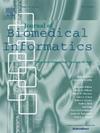Biomedical document-level relation extraction with thematic capture and localized entity pooling
IF 4
2区 医学
Q2 COMPUTER SCIENCE, INTERDISCIPLINARY APPLICATIONS
引用次数: 0
Abstract
In contrast to sentence-level relational extraction, document-level relation extraction poses greater challenges as a document typically contains multiple entities, and one entity may be associated with multiple other entities. Existing methods often rely on graph structures to capture path representations between entity pairs. However, this paper introduces a novel approach called local entity pooling that solely relies on the pre-training model to identify the bridge entity related to the current entity pair and generate the reasoning path representation. This technique effectively mitigates the multi-entity problem. Additionally, the model leverages the multi-entity and multi-label characteristics of the document to acquire the document’s thematic representation, thereby enhancing the document-level relation extraction task. Experimental evaluations conducted on two biomedical datasets, CDR and GDA. Our TCLEP (Thematic Capture and Localized Entity Pooling) model achieved the Macro-F1 scores of 71.7% and 85.3%, respectively. Simultaneously, we incorporated local entity pooling and thematic capture modules into the state-of-the-art model, resulting in performance improvements of 1.5% and 0.2% on the respective datasets. These results highlight the advanced performance of our proposed approach.

基于主题捕获和局部实体池的生物医学文档级关系提取。
与句子级关系提取相比,文档级关系提取面临更大的挑战,因为文档通常包含多个实体,并且一个实体可能与多个其他实体相关联。现有的方法通常依赖于图结构来捕获实体对之间的路径表示。然而,本文引入了一种称为局部实体池的新方法,该方法仅依赖于预训练模型来识别与当前实体对相关的桥实体并生成推理路径表示。该技术有效地缓解了多实体问题。此外,该模型利用文档的多实体和多标签特征来获取文档的主题表示,从而增强了文档级关系提取任务。对CDR和GDA两个生物医学数据集进行了实验评估。我们的TCLEP (Thematic Capture and localization Entity Pooling)模型的Macro-F1得分分别为71.7%和85.3%。同时,我们将本地实体池和主题捕获模块合并到最先进的模型中,从而使各自数据集的性能提高1.5%和0.2%。这些结果突出了我们提出的方法的先进性能。
本文章由计算机程序翻译,如有差异,请以英文原文为准。
求助全文
约1分钟内获得全文
求助全文
来源期刊

Journal of Biomedical Informatics
医学-计算机:跨学科应用
CiteScore
8.90
自引率
6.70%
发文量
243
审稿时长
32 days
期刊介绍:
The Journal of Biomedical Informatics reflects a commitment to high-quality original research papers, reviews, and commentaries in the area of biomedical informatics methodology. Although we publish articles motivated by applications in the biomedical sciences (for example, clinical medicine, health care, population health, and translational bioinformatics), the journal emphasizes reports of new methodologies and techniques that have general applicability and that form the basis for the evolving science of biomedical informatics. Articles on medical devices; evaluations of implemented systems (including clinical trials of information technologies); or papers that provide insight into a biological process, a specific disease, or treatment options would generally be more suitable for publication in other venues. Papers on applications of signal processing and image analysis are often more suitable for biomedical engineering journals or other informatics journals, although we do publish papers that emphasize the information management and knowledge representation/modeling issues that arise in the storage and use of biological signals and images. System descriptions are welcome if they illustrate and substantiate the underlying methodology that is the principal focus of the report and an effort is made to address the generalizability and/or range of application of that methodology. Note also that, given the international nature of JBI, papers that deal with specific languages other than English, or with country-specific health systems or approaches, are acceptable for JBI only if they offer generalizable lessons that are relevant to the broad JBI readership, regardless of their country, language, culture, or health system.
 求助内容:
求助内容: 应助结果提醒方式:
应助结果提醒方式:


